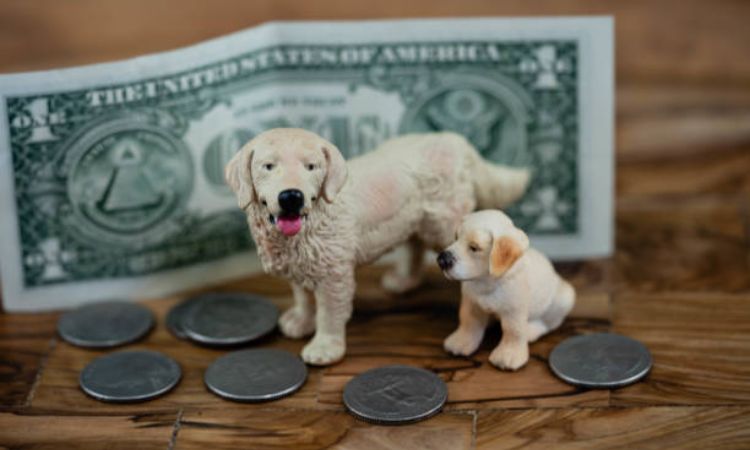Welcoming a dog into your home is a wonderful experience, but it’s important to understand the costs involved beyond just the first year. Between quality food, comfortable supplies, and regular veterinary care, expenses can add up more than many expect.
At Nexus-pets, we’ll help you explore the ongoing costs of dog ownership after that initial year, so you can plan ahead and provide the best care for your loyal companion without any financial surprises.

First Year Dog Ownership Costs
1. Annual Veterinary Care Costs
Routine veterinary care is a vital part of keeping your dog healthy year after year. Annual wellness visits include physical exams, vaccinations, and bloodwork, averaging around $423 per year. Parasite prevention such as monthly flea, tick, and heartworm medications is also essential, with costs varying based on the dog’s weight and location.
Many vets recommend yearly dental cleanings or home dental products, and older dogs may require additional health screenings like X-rays or blood panels. Planning for these regular costs can help prevent larger expenses down the line.
2. Food and Treat Expenses
Feeding your dog properly depends on their size, age, and energy level. Small breeds may require less food, while large or active dogs can consume significantly more. Premium dog food or specialty diets like raw or homemade meals often cost more than standard commercial brands.
On average, owners spend about $446 annually on dog food. In addition, treats and dietary supplements—whether for training, joint health, or digestive support—can add another $200+ per year. Prioritizing nutrition not only supports health but can also reduce future medical costs.
3. Grooming Costs
Grooming needs differ widely by breed and coat type. Long-haired or double-coated breeds often need professional grooming every 4–8 weeks, while short-haired dogs may only require occasional baths and brushing. Annual grooming costs typically range around $190, but can be higher for high-maintenance breeds.
Owners who prefer to groom at home will need to invest in quality tools like brushes, nail clippers, and shampoo. Consistent grooming helps maintain coat health and comfort and can prevent issues like matting or skin irritation.
4. Supplies and Equipment Replacement
Even the sturdiest toys and gear eventually wear out. Dogs often outgrow their first collar or chew through their favorite toy. Items like leashes, harnesses, bedding, or crates may need replacing every year or two depending on usage and quality.
These replacements can cost a few hundred dollars annually. Being proactive about replacing worn-out gear helps maintain your dog’s safety and comfort—and prevents costly accidents or injuries from broken items.

5. Training and Socialization (Ongoing)
Beyond basic obedience, many dogs benefit from ongoing training to reinforce good behavior or address specific issues. Advanced courses, group classes, or one-on-one sessions can support your dog’s mental stimulation and social skills.
Additionally, services like doggy daycare or professional dog walkers help with socialization and exercise—especially for owners with busy schedules. These services can range from $10 to $50 per session, depending on location and frequency.
6. Pet Insurance and Emergency Fund
Pet insurance is increasingly popular for covering accidents, illnesses, and emergencies. Annual premiums can vary widely—typically from $300 to $600 depending on breed, age, and coverage level. Even with insurance, it’s wise to maintain an emergency fund to handle deductibles or treatments not covered by a policy.
Emergency surgeries or hospitalization can cost thousands, so setting aside savings for unexpected expenses can offer peace of mind during difficult times.
7. Licensing and Legal Requirements
Many municipalities require annual dog license renewals, with fees ranging from $10 to $30 depending on location. Some regions also impose additional taxes or breed-specific regulations. Keeping your pet properly licensed not only ensures legal compliance but also helps identify and return lost dogs quickly. It’s a small but essential part of responsible dog ownership.
8. Miscellaneous Expenses
Life with a dog includes more than just the essentials. Owners may need to budget for boarding, pet-sitting, or travel accommodations when away from home—averaging $223 per year. Other unexpected costs can include replacing lost items, enrolling in canine events or sports, or celebrating special milestones like birthdays with toys or treats. These extras reflect the joy and enrichment dogs bring to our lives and are part of the full experience of being a devoted pet parent.

Total Estimated Annual Cost Range
Once the initial costs of dog ownership are covered in the first year, the ongoing annual expenses tend to stabilize. However, these yearly costs still vary significantly depending on the dog’s size, health needs, and lifestyle.
- Small breed dogs generally incur lower yearly costs, averaging between $700 to $1,000. They eat less, often require less grooming, and medications are typically cheaper due to their size.
- Medium breed dogs usually fall in the range of $1,000 to $1,500 per year. Their food intake, grooming needs, and medical care scale accordingly.
- Large breed dogs tend to be the most expensive, with annual costs ranging from $1,500 to $2,000 or more, due to their higher food consumption, larger doses of medication, and more frequent gear replacements.
Several factors influence these variations in cost:
- Location affects veterinary service prices, licensing fees, and even grooming or pet-sitting rates.
- Health conditions, whether breed-specific or individual, can significantly raise medical bills—especially without insurance.
- Lifestyle choices, such as opting for premium food, regular grooming, training sessions, or daycare, can all increase the yearly total.
While costs vary, responsible planning ensures a happy, healthy life for your dog without financial surprises.
While the initial year of dog ownership involves significant one-time expenses, the subsequent years bring a more predictable pattern of recurring costs. These annual expenses primarily include food, routine vet care, and preventative medications. By understanding these ongoing financial commitments, you can better prepare for the long-term responsibilities of caring for your canine companion.






